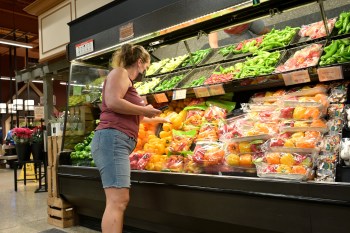As Congress debates farm bill, food stamps hang in the balance
As Congress debates farm bill, food stamps hang in the balance
It’s been a big week for talk about farming and food on Capitol Hill. Both the House and Senate Agriculture Committees have passed separate versions of the farm bill, which is long overdue for renewal. Next Monday, the full Senate is set to debate the bill. Debate on the on the floor of the House is expected in June.
The stickiest wicket has been around the size of the food stamp program, technically known as the Supplemental Nutrition Assistance Program or SNAP. At last count, about one in five Americans received food stamps, many of them elderly or working-poor families with children.
Use of food stamps has grown dramatically in the aftermath of the Great Recession, as more people struggled to get food on the table. Growth in the last decade has also come from easing of eligibility requirements for the program to make it more accessible.
In the House, many politicians have expressed concerns that Americans are becoming too dependent on food stamps. After debates involving dueling Bible verses, the House Agriculture Committee passed a bill this week that would make it harder to qualify for food stamps, and cut more than $20 billion dollars to the program over the next ten years.
About two million people, or four percent of participants, would lose food stamps under the current House bill, according to calculations from the non-partisan Center on Budget and Policy Priorities. It would be the largest cut in food stamps since the 1996 welfare reforms.
The Senate’s current version of the bill would also make cuts to the food stamp program, though far smaller ones. Spending would shrink by about $4 billion over the next ten years.
In an interview with Marketplace earlier this week, Agriculture Secretary Tom Vilsack argued that food stamps not only help those in need but also stimulate the economy, with every dollar spent in the food stamp program generating almost twice as much in economic activity.
“As more people can buy more at the grocery store, that generates opportunities for grocers to increase employment, for those who truck produce to grocery stores to keep employed, for those in the processing and shipping and packaging and warehousing of food products,” he said.
”Those are all basic opportunities that are maintained or expanded because we’ve got this Food Nutrition Assistance Program.”
There’s a lot happening in the world. Through it all, Marketplace is here for you.
You rely on Marketplace to break down the world’s events and tell you how it affects you in a fact-based, approachable way. We rely on your financial support to keep making that possible.
Your donation today powers the independent journalism that you rely on. For just $5/month, you can help sustain Marketplace so we can keep reporting on the things that matter to you.


















